Files covering all aspects of DIY antenna design and modelling, and spreadsheet solutions to calculations in the RF workshop. An upgrade to the antenna modelling capacity of XLNEC is released as XLNEC-2. A design for a modern, handheld, 'Octopus' ('Huntron'(TM) style) tester. Build a complete DIY antenna patterning range with supporting software
XLNEC-2 A complete rebuild of my XLNEC antenna modelling program, now in EXCEL 2003-7 form and using NEC-2. Checked in Win 10. Many new pages now including matching helps adapted from ANTENNA BUILDERS COMPANION (see lower). XLNEC pioneered use of parametric design, with automated sequential builds whilst stepping chosen parameters. A totally free NEC2 antenna modelling and matching package, unlike any other. Pre built parametric design pages for many common antenna types. All the features the average builder would expect of an antenna modelling program. Run as Administrator, as NEC writes its file to C:\ (Free since 1998)

If you do any service work, take a look at this DIY Arduino based, hand held, Octopus Tester. It has all the advantages of the traditional electronic component tester but is self contained, with no mains connect. Driven by 100 Hertz triangular wave, but easily changeable. Offered in three designs, from a simple single window traditional display, to a more comprehensive dual window version. This type of tester has ben commercially available as the 'Huntron'(TM), but not previously as a hand held. Sometimes called the x/y tester.
The download package contains code for all versions, plus a comprehensive set of design notes. In all versions, all electronics sits on a proto-shield between Arduino and display.
The download package contains code for all versions, plus a comprehensive set of design notes. In all versions, all electronics sits on a proto-shield between Arduino and display.
Project:- The Ardupus. A very useful re-design of the forever useful Octopus X/Y tester. (Arduino + Octopus = "Ardupus")
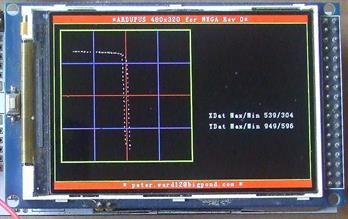
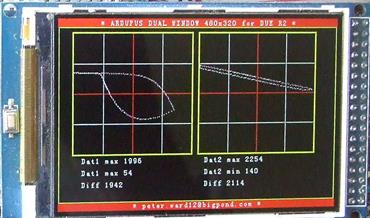
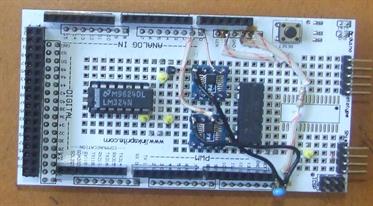
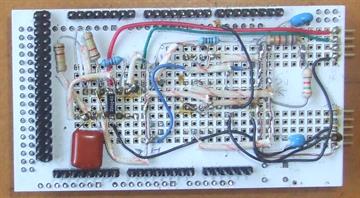
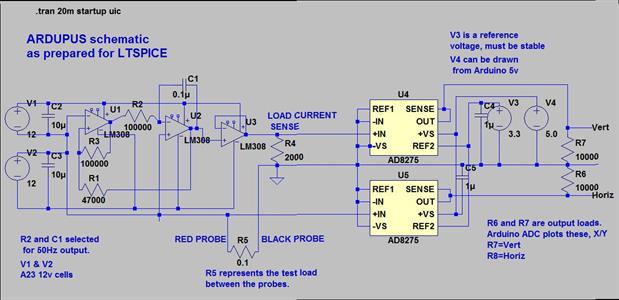
Upper side of shield holding the redesigned Octopus components.
Under side of shield holding the redesigned Octopus components.
Dual window version of Arduino based Octopus x/y tester enables easiest comparison between components on a known good board, with those on a faulty board
Simple window version of Arduino based Octopus x/y tester.
The Arduino based Octopus tester, "Ardupus", received a simulation workout for a number of design options
before proceeding. The accompanying notes and simulation information is included in the download file and gives full detail.
before proceeding. The accompanying notes and simulation information is included in the download file and gives full detail.
UPDATES:- Expanded projects for Antenna builders.
July 2020 Updated, expanded antenna modelling program, XLNEC-2
9 Aug 2020 Introduced ANTENNA BUILDERS TOOLBOX. A suite of programs to design, build, match, and swing your antenna build.
8 Jun 29 2023 Complete rework of ANTENNA BUILDERS COMPANION
July 2020 Updated, expanded antenna modelling program, XLNEC-2
9 Aug 2020 Introduced ANTENNA BUILDERS TOOLBOX. A suite of programs to design, build, match, and swing your antenna build.
8 Jun 29 2023 Complete rework of ANTENNA BUILDERS COMPANION
This download is a TOOLBOX for antenna builders containing four programs:-
1. 'XLNEC-2' A complete rebuild of my earlier released XLNEC, now in EXCEL 2003-7 form, and checked in Win 10. Many new pages now including matching aids, XLNEC pioneered use of parametric design, with automated sequential builds whilst stepping chosen parameters See above.
1. 'XLNEC-2' A complete rebuild of my earlier released XLNEC, now in EXCEL 2003-7 form, and checked in Win 10. Many new pages now including matching aids, XLNEC pioneered use of parametric design, with automated sequential builds whilst stepping chosen parameters See above.
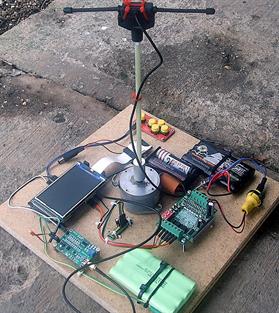
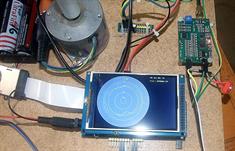
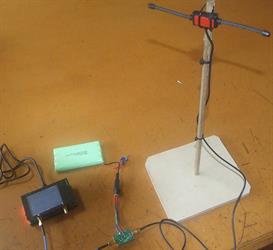
Above. Arduino antenna patterning range for $100 USD
Above.Close up of antenna plot display, traditional ARRL format. Pattern is saved to SD for processsing
Above. nanoVNA V2 is signal source, power is increased by 20 dB MAR amp.
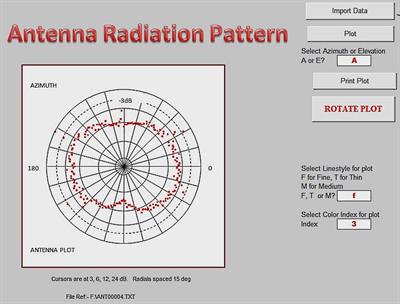
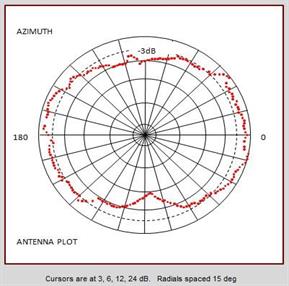
Antenna pattern taken from SD and 'cleaned'.
Outliers, probably caused by a 433 MHz system in my kitchen that polls a remote electric fence monitor. The workbook will enable you to filter, smooth, rotate pattern and print.
Outliers, probably caused by a 433 MHz system in my kitchen that polls a remote electric fence monitor. The workbook will enable you to filter, smooth, rotate pattern and print.
nanoVNA and ANTENNA BUILDERS COMPANION (interactive EXCEL 2007 spreadsheet format),
A collection of seventy mostly interactive, worksheets of interest to all antenna builders. Solve all the most common matching problems, and just about every other problems related to antenna design The authors personal collection of solutions arising from employment in traditional antenna manufacturing, enlarged and refined for more general use. Also a complement to XLNEC-2
A collection of seventy mostly interactive, worksheets of interest to all antenna builders. Solve all the most common matching problems, and just about every other problems related to antenna design The authors personal collection of solutions arising from employment in traditional antenna manufacturing, enlarged and refined for more general use. Also a complement to XLNEC-2
SEVENTY WORKSHEETS, mostly interactive
TO KNOW. Starting with sobering realities for the antenna builder.
RET LOSS UNCERTAINTY. The impossibility of measuring an accurate return loss in the home workshop with nanoVNA is easily shown on this interactive calculator.
BRIDGE UNCERTAINTIES. Interactive sheet to show how bridge directivity effects measured return loss.
CABLE LOSS Cable loss varies by frequency and SWR. This sheet will calculate loss, eirp corrected for cable loss.
K FACTOR. K factor shortening is needed for every antenna build. This calculates per formula.
VELOCITY FACTOR. Needed for stubs, line transformers, and cable element calculations. Manufacturers supply this factor, but if you use covered wire or braid as a radiator, you need to experimentally determine VF.
ERP EIRP Your licence sets max radiated power, effected by feed cable, antenna gain. Important in such as
data links.
WAVE PORTION Calculates how muich to trim to get to wanted frequency, using current resonance found by dip meter.
GDO Even though later sheets show how to use nanoVNA to ‘dip’ an antenna, the Grid Dip Oscillator still has a place in every antenna builder's workshop.
SMITH FORBIDDEN ZONES. When matching with the aid of Smith Chart, there are zones to avoid, and ideal combinations of L and C to move your impedance to 50 ohms. So easy to use this info in conjunction with STUB ANALYZER worksheet
BROAD SMITH Broadband matches are a tricky world. Use this in conjunction with SOLVER worksheet. Even the best calculated match fails if antenna is not fully decoupled from line at every frequency.
SOLVER Calculates a visual Smith Chart so you can follow effects of varying any of your matching elements
STAGGER MATCH Another visual matching aid for broadbanding. Again, even the best calculated match fails if antenna is not fully decoupled from line at every frequency.
UP-LINE An educational, interactive sheet to show how impedances change as we move upline from the source
nanoVNA STUB MATCH Step by step use of R and jX from nanoVNA to match your antenna
STUB PLACEMENT from R & jX The single stub match is often used at the base of ¼ wave whips
OPEN LINE STUB Using Vmax or Vmin of standing waves on open lines to place matching stubs
SMITH STUB PLACER The most important sheet for matching your antenna using values from your nanoVNA
BROADBAND STUB VIEW Interactive, but shows Smith Chart values at each point as you move thru the matching network.
SERIES SECTION TRANSFORMER Coax section impedance transforms. Widely published, but rarely valuable by itself.
SLUG TXFMR Another matching technique modifying line within feed tube to avoid external stubs. Applicable to UHF
COAXIAL FILTER Mechanical coaxial low pass filter designer
BANDPASS Mechanical bandpass filter designer.
STUB TRAPS Calcuklate a stub trap for unwanted harmonics
INTERMODS Calculates potential intermods of two frequencies
SYSTEM PERFORMANCE This expresses performance as uV on 50 ohm receiver load, used to be handy when talking to the old 27mHZ CB community, but a very practical way of understanding the ‘final end product’ of your system
LINE TRANSFORMATIONS Line length transforms load impedance if not matched at antenna. This looks back from known load to show what has to be matched at TX end of coax
TDR Just a reminder sheet. TDR is very handy for finding line discontinuities, but the nanoVNA is not yet capable of such fine resolution as to be able to show bad connectors
TWELFTH-WAVE TRANSFORMER Matching with twelvth wave transformers is a useful extension of what I described earlier as ‘slug match’
MATCH BANDWIDTH For single and double stub solutions, bandwith is calculated from the equations in Jasik’s “Antenna Engineering handbook”
WHIP ANT CALCS Sheet calculates needed base and elevated loading params from ARRL formulas
ANTENNA GAIN Calculate antenna gain per RSSI using a Standard Gain Antenna as reference
ANTENNA GAIN Calculate antenna gain method two, using two identical antennas
ANTENNA GAIN Calculate antenna gain method three, similar method two
BINOMIAL TRANSFORMER Implementing line section transformers
DECOUPLING SKIRTS Important knowledge how to build an effective decoupling skirt and skirt limitations
CUT OFF CHOKE Build an effective quarter wave cut-off choke with calculated internal dielectric slug.
Also calculates for half wave tube section radiators
SKIRTED DIPOLE A practical build at 2400 GHz
XLNEC Reminder of free antenna design /optimising software
nanoVNA TECHNICAL My REM page of nanoVNA commands
RESISTIVE PAD MATCH Handy pad match designer for instrumentation, not antenna
SWR & LINE TRANSFORMATIONS More line/ load calcs
INSTALLATION ADVICE Things learned the hard way may save you some grief
DIY ATTENUATORS Calculate resistive type attenuators
SWR per ATTENUATOR Pre VNA methods for SWR, per the early Jerrold Co.notes.
DELAY LINE pre VNA methods for SWR, per the early Jerrold Co.notes
ANTENNA EFFICIENCY Simple explanation of antennas and power transfer
MATCH BOX 1 Interactive design of Matching Box outlined in old Motorola RF Power Data Manual
MATCH BOX 2 Second interactive design of Matching Box outlined in old Motorola RF Power Data Manual
MATCH BOX 3 Third interactive design of Matching Box outlined in old Motorola RF Power Data Manual
ELEMENT SCALING Calculates scaled lengths for both ‘thin’ and ‘fat’ elements
ANTENNAS for DIGITAL Understanding Inter-digital interference
HELICAL ANTENNA Design sheet for helical antennas
COAXIAL GAIN ANTENNA Design crossed section coaxial gain antennas correctly. The 'COCO'
REVERSE ENGINEER Reverse engineer a ‘Tube on Coax Core’ antenna, a common successful commercial design.
REVERSE ENGINEER 2 Scaled build detail for ‘Tube on Coax Core’
FAIL Designs that leave something to be desired
LINE CURRENTS Line current probe to detect line currents
NIST DIPOLE A pointer to Chris Scott’s ‘Measuring E-fields’ 25-1000 MHz with the NIST dipole detector’
STANDARD GAIN ANTENNA Build to formula
INDUCTOR CALCS Calculator for inductors, and cavity
RESISTIVE TAP Desing resistive tap attenuarors that maintain impedances at all ports. Handy for nanoVNA
RESISTOR COMBINATIONS Occasionally you need an exact resistor, especially if repairing old TEK stuff, where critical values have drifted
WHIP DIP Build tune and match your ¼ wave whip the best way if you wish a resonant antenna with a textbook pattern
NanoVNA DIPPER Yes, the nanoVNA can be used as a ‘dipper’, but operates differently to the old ‘GDO’ Here are three ways of setting it up
NanoVNA DIP EXAMPLE A user example
TO KNOW. Starting with sobering realities for the antenna builder.
RET LOSS UNCERTAINTY. The impossibility of measuring an accurate return loss in the home workshop with nanoVNA is easily shown on this interactive calculator.
BRIDGE UNCERTAINTIES. Interactive sheet to show how bridge directivity effects measured return loss.
CABLE LOSS Cable loss varies by frequency and SWR. This sheet will calculate loss, eirp corrected for cable loss.
K FACTOR. K factor shortening is needed for every antenna build. This calculates per formula.
VELOCITY FACTOR. Needed for stubs, line transformers, and cable element calculations. Manufacturers supply this factor, but if you use covered wire or braid as a radiator, you need to experimentally determine VF.
ERP EIRP Your licence sets max radiated power, effected by feed cable, antenna gain. Important in such as
data links.
WAVE PORTION Calculates how muich to trim to get to wanted frequency, using current resonance found by dip meter.
GDO Even though later sheets show how to use nanoVNA to ‘dip’ an antenna, the Grid Dip Oscillator still has a place in every antenna builder's workshop.
SMITH FORBIDDEN ZONES. When matching with the aid of Smith Chart, there are zones to avoid, and ideal combinations of L and C to move your impedance to 50 ohms. So easy to use this info in conjunction with STUB ANALYZER worksheet
BROAD SMITH Broadband matches are a tricky world. Use this in conjunction with SOLVER worksheet. Even the best calculated match fails if antenna is not fully decoupled from line at every frequency.
SOLVER Calculates a visual Smith Chart so you can follow effects of varying any of your matching elements
STAGGER MATCH Another visual matching aid for broadbanding. Again, even the best calculated match fails if antenna is not fully decoupled from line at every frequency.
UP-LINE An educational, interactive sheet to show how impedances change as we move upline from the source
nanoVNA STUB MATCH Step by step use of R and jX from nanoVNA to match your antenna
STUB PLACEMENT from R & jX The single stub match is often used at the base of ¼ wave whips
OPEN LINE STUB Using Vmax or Vmin of standing waves on open lines to place matching stubs
SMITH STUB PLACER The most important sheet for matching your antenna using values from your nanoVNA
BROADBAND STUB VIEW Interactive, but shows Smith Chart values at each point as you move thru the matching network.
SERIES SECTION TRANSFORMER Coax section impedance transforms. Widely published, but rarely valuable by itself.
SLUG TXFMR Another matching technique modifying line within feed tube to avoid external stubs. Applicable to UHF
COAXIAL FILTER Mechanical coaxial low pass filter designer
BANDPASS Mechanical bandpass filter designer.
STUB TRAPS Calcuklate a stub trap for unwanted harmonics
INTERMODS Calculates potential intermods of two frequencies
SYSTEM PERFORMANCE This expresses performance as uV on 50 ohm receiver load, used to be handy when talking to the old 27mHZ CB community, but a very practical way of understanding the ‘final end product’ of your system
LINE TRANSFORMATIONS Line length transforms load impedance if not matched at antenna. This looks back from known load to show what has to be matched at TX end of coax
TDR Just a reminder sheet. TDR is very handy for finding line discontinuities, but the nanoVNA is not yet capable of such fine resolution as to be able to show bad connectors
TWELFTH-WAVE TRANSFORMER Matching with twelvth wave transformers is a useful extension of what I described earlier as ‘slug match’
MATCH BANDWIDTH For single and double stub solutions, bandwith is calculated from the equations in Jasik’s “Antenna Engineering handbook”
WHIP ANT CALCS Sheet calculates needed base and elevated loading params from ARRL formulas
ANTENNA GAIN Calculate antenna gain per RSSI using a Standard Gain Antenna as reference
ANTENNA GAIN Calculate antenna gain method two, using two identical antennas
ANTENNA GAIN Calculate antenna gain method three, similar method two
BINOMIAL TRANSFORMER Implementing line section transformers
DECOUPLING SKIRTS Important knowledge how to build an effective decoupling skirt and skirt limitations
CUT OFF CHOKE Build an effective quarter wave cut-off choke with calculated internal dielectric slug.
Also calculates for half wave tube section radiators
SKIRTED DIPOLE A practical build at 2400 GHz
XLNEC Reminder of free antenna design /optimising software
nanoVNA TECHNICAL My REM page of nanoVNA commands
RESISTIVE PAD MATCH Handy pad match designer for instrumentation, not antenna
SWR & LINE TRANSFORMATIONS More line/ load calcs
INSTALLATION ADVICE Things learned the hard way may save you some grief
DIY ATTENUATORS Calculate resistive type attenuators
SWR per ATTENUATOR Pre VNA methods for SWR, per the early Jerrold Co.notes.
DELAY LINE pre VNA methods for SWR, per the early Jerrold Co.notes
ANTENNA EFFICIENCY Simple explanation of antennas and power transfer
MATCH BOX 1 Interactive design of Matching Box outlined in old Motorola RF Power Data Manual
MATCH BOX 2 Second interactive design of Matching Box outlined in old Motorola RF Power Data Manual
MATCH BOX 3 Third interactive design of Matching Box outlined in old Motorola RF Power Data Manual
ELEMENT SCALING Calculates scaled lengths for both ‘thin’ and ‘fat’ elements
ANTENNAS for DIGITAL Understanding Inter-digital interference
HELICAL ANTENNA Design sheet for helical antennas
COAXIAL GAIN ANTENNA Design crossed section coaxial gain antennas correctly. The 'COCO'
REVERSE ENGINEER Reverse engineer a ‘Tube on Coax Core’ antenna, a common successful commercial design.
REVERSE ENGINEER 2 Scaled build detail for ‘Tube on Coax Core’
FAIL Designs that leave something to be desired
LINE CURRENTS Line current probe to detect line currents
NIST DIPOLE A pointer to Chris Scott’s ‘Measuring E-fields’ 25-1000 MHz with the NIST dipole detector’
STANDARD GAIN ANTENNA Build to formula
INDUCTOR CALCS Calculator for inductors, and cavity
RESISTIVE TAP Desing resistive tap attenuarors that maintain impedances at all ports. Handy for nanoVNA
RESISTOR COMBINATIONS Occasionally you need an exact resistor, especially if repairing old TEK stuff, where critical values have drifted
WHIP DIP Build tune and match your ¼ wave whip the best way if you wish a resonant antenna with a textbook pattern
NanoVNA DIPPER Yes, the nanoVNA can be used as a ‘dipper’, but operates differently to the old ‘GDO’ Here are three ways of setting it up
NanoVNA DIP EXAMPLE A user example
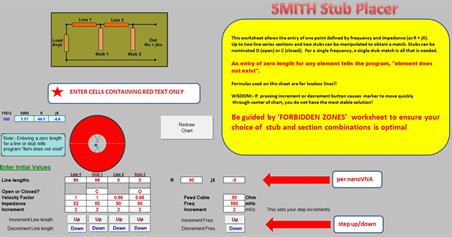
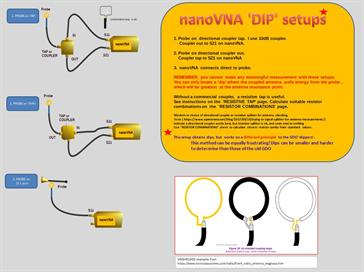
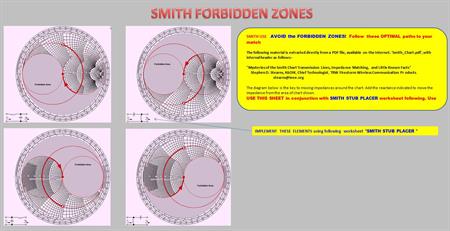
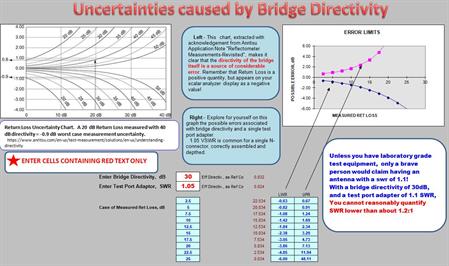
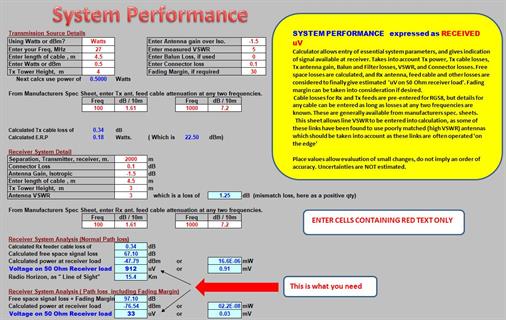
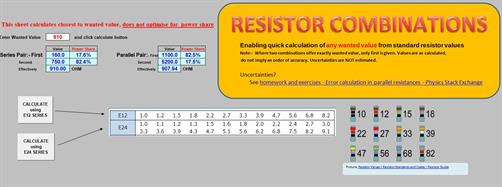
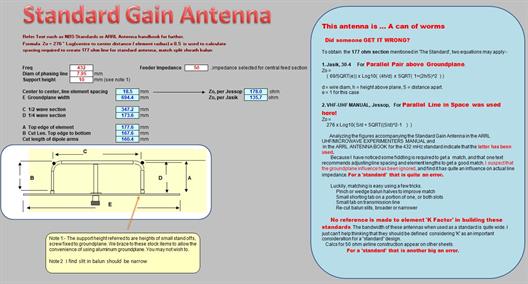
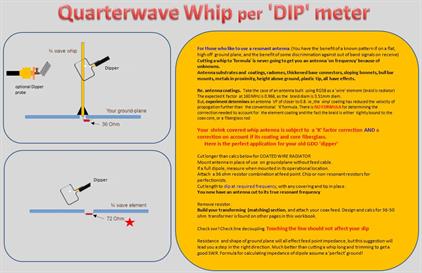
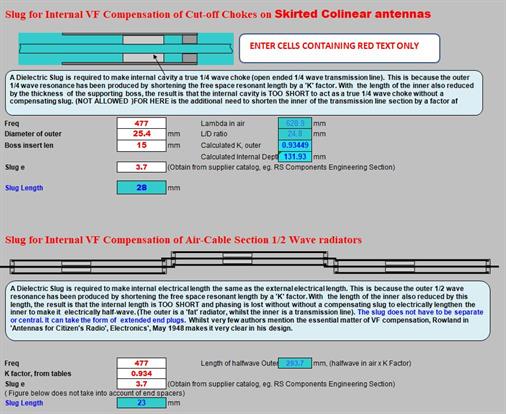
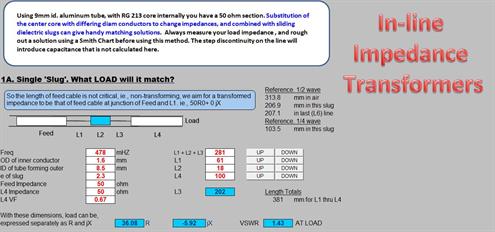
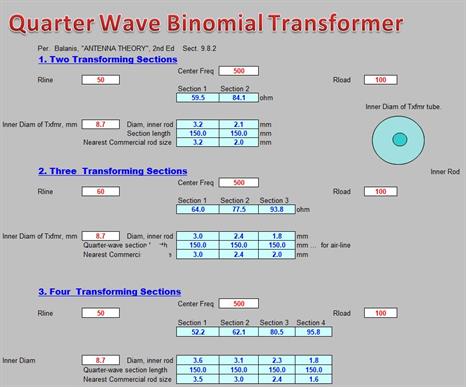
Above:- Use the information in FORBIDDEN ZONES in conjunction with the SMITH STUB PLACER worksheet to design an optimal match.
Above:- Step stub positions and lengths using SMITH STUB PLACER to visually move impedance to center of chart using guidance from FORBIDDEN ZONES sheet
Above:- BRIDGE UNCERTAINTIES is an interactive worksheet that shows the extreme difficulty of quantifying a return loss
Above:- Consider system performance in terms of its ultimate practical value, uV on receiver load. The SYSTEM PERFORMANCE sheet calculates all path gains and losses (inc fading margin) and comes up with the answer
Above:- There are times when an exact resistor value is needed. The RESISTOR COMBINATIONS sheet calculates pairs of E12 and E24 values that get closest to wanted value
Above:- Quick design of Standard Gain Antenna, and a look at some sloppy engineering by those producing the original standard.
Above:- A better way to build a whip antenna on the WHIP DIP worksheet
allows you to set the whip to resonance before matching
allows you to set the whip to resonance before matching
Above:- The CUT OFF CHOKE worksheet designs the essential internal dielectric slug needed for every quarter wave decoupling skirt
Above:- The CUT OFF CHOKE worksheet designs the essential internal dielectric slug needed for every quarter wave decoupling skirt
Above:- The BINOMIAL TRANSFORMER design worksheet
Above:- NanoVNA DIPPER sheet has suggestions how to use your nanoVNA as a Dip meter. Uses a different dip principle to the GDO dipper. Useful, but I still prefer the old GDO for antenna work.
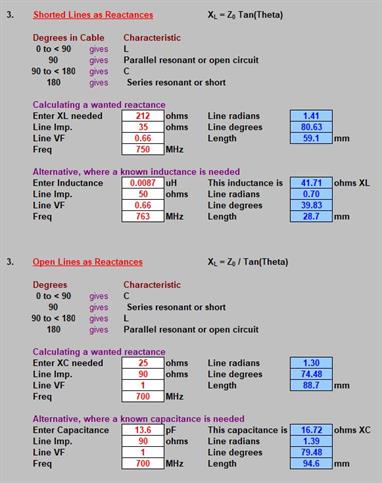
Above:- The INDUCTOR CALCS sheet also calculates
reactances of line sections.
reactances of line sections.
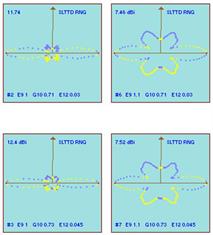
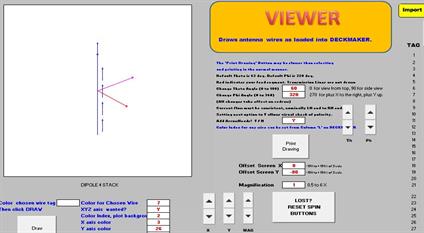
Pattern DISPLAY has plenty of options for producing cut-n-paste patterns for other publications
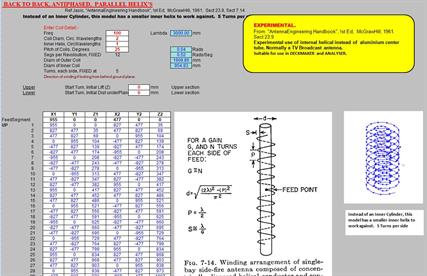
Pre built parametric builder for BACK to BACK ANTIPHASED HELICIES antenna
3. 'ANTENNA_PATTERN_STANDALONE_320x480_V2.ino' Arduino program for a standalone antenna range.As illustrated the range will swing small antennas from 400 MHz up. For bigger antennas you will need bigger stepper, drivers, and supports but the software will remain
the same.
This code contains all necessary advice. The entire build should cost around $100. A low harmonic 10dBm signal source is preferred, but I here use a nanoVNA V2 feeding source antenna through a 20dB gain MAR amplifier
the same.
This code contains all necessary advice. The entire build should cost around $100. A low harmonic 10dBm signal source is preferred, but I here use a nanoVNA V2 feeding source antenna through a 20dB gain MAR amplifier
2. 'ANTENNA BUILDER'S COMPANION.xlsm' A large EXCEL workbook containing pages to calculate EVERYTHING you will ever need in building and matching antennas. Plenty of practical help in principles and implementation. YEARS of practical work have gone into this one. See above
4. ANTENNA FILE PROCESSOR.xlsm' will load the pattern from SD created by #3 above, clean it up, and enable you to print
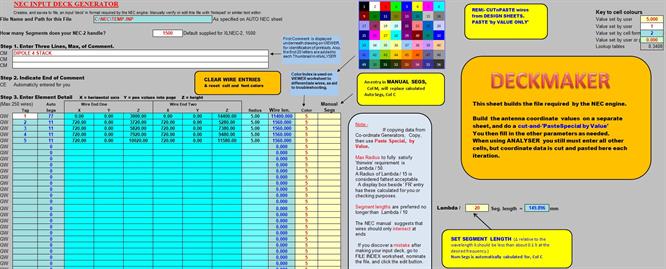
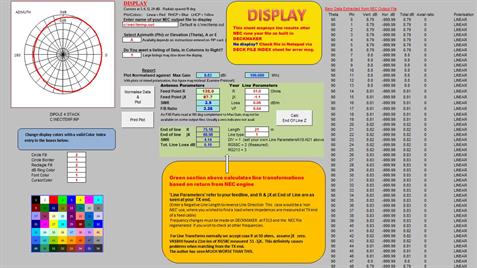
: The VIEWER allows you a quick visual check of element polarities, important because it is easy to reverse a wire when building complex designs. You can instantly re color a selected wire to help troubleshoot
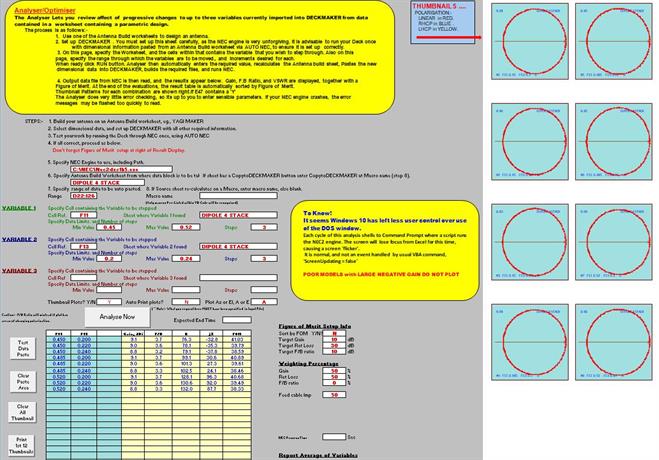
DECKMAKER automatically transfers the 'Deck' to NEC2 for processing. Instead of manually building coordinates, each antenna design sheet automates the transfer of coordinates to the DECKMAKER
Left. The UNIQUE feature of XLNEC is that the OPTIMISER can step through combinations of three parameters, Each step generates thumbnail pattern including gain figures, f/b ratio
Also UNIQUE are the parametric design sheets for many common, and uncommon antennas. Nominate any parameter to change, and the complete antenna is dimensionally rebuilt. A simple button press transfers the new design to the DECKMAKER SHEET
Also UNIQUE are the parametric design sheets for many common, and uncommon antennas. Nominate any parameter to change, and the complete antenna is dimensionally rebuilt. A simple button press transfers the new design to the DECKMAKER SHEET
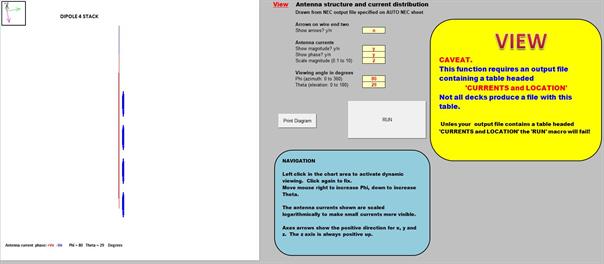
VIEW current intensity and distribution. A contribution from Chris Lord
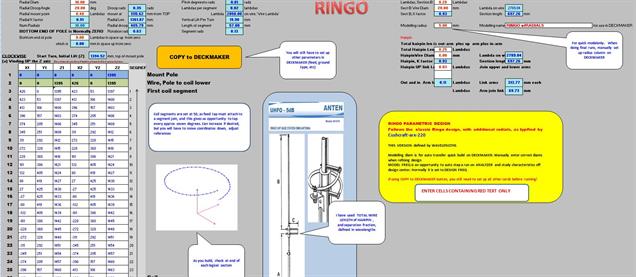
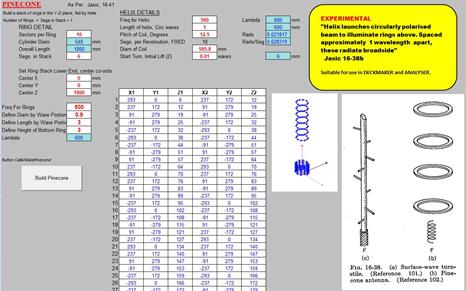
Pre built parametric builder for . RINGO antenna
Pre built parametric builder for PINECONE antenna
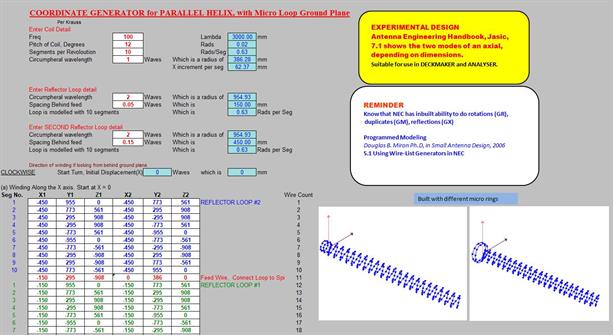
Pre built parametric builder for MICRO LOOP HELIX antenna
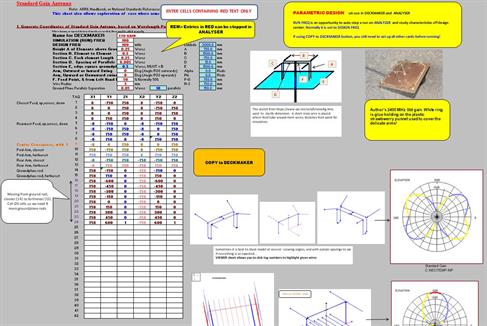
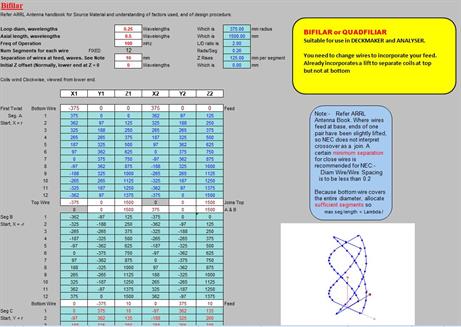
Pre built parametric builder for STANDARD GAIN antenna
Pre built parametric builder for BIFILAR antenna
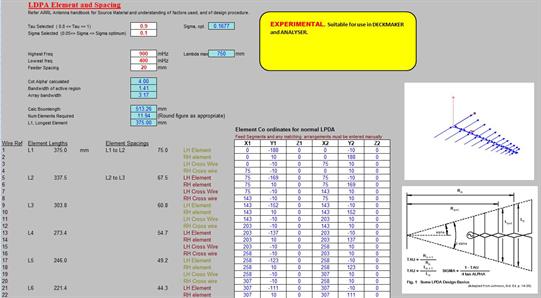
Above: Pre built parametric builder for LPVA, BOOM above BOOM antenna
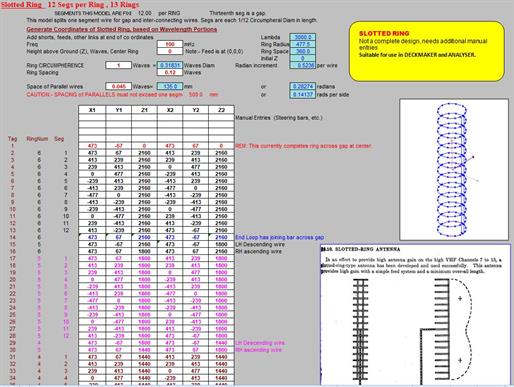
Right: Pre built parametric builder for SLOTTED RINDG antenna
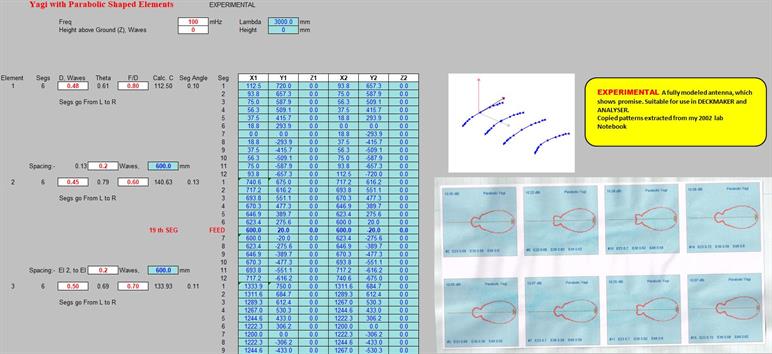

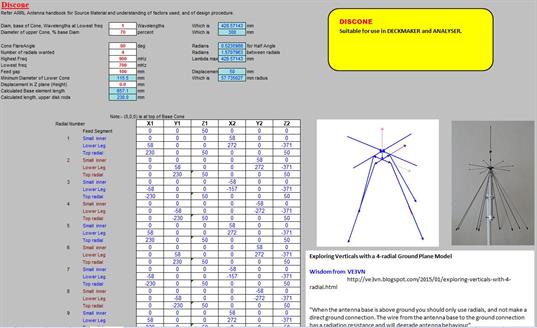
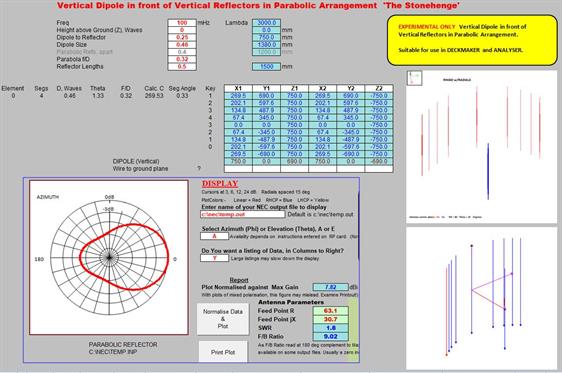
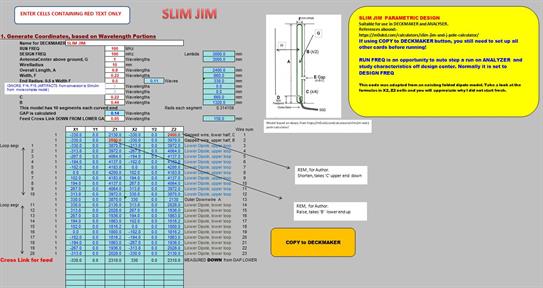
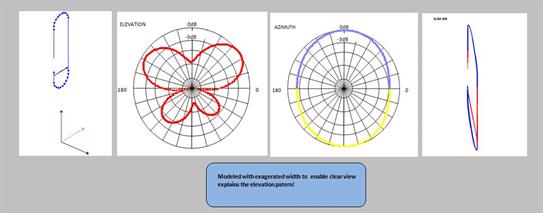
BELOW, more design sheets from XLNEC-2 antenna modelling software
Above:
Spreadsheet parametric antenna builder for PARABOLIC YAGI built by
XLNEC antenna modelling program.
This builds the 'deck' required by the NEC-2 engine, ready to paste to the 'DECKMAKER' worksheet to complete the deck building process
Spreadsheet parametric antenna builder for PARABOLIC YAGI built by
XLNEC antenna modelling program.
This builds the 'deck' required by the NEC-2 engine, ready to paste to the 'DECKMAKER' worksheet to complete the deck building process
Above: Pre built parametric builder for LAZY H
Above: Pre built parametric builder for DISCONE
Above: Pre built parametric builder for VERTICAL DIPOLE with VERTICAL REFLECTORS
Above:.Pre built parametric builder for SLIM JIM
Lower panel shows views from other sheets in the workbook related to 'Slim Jim'
Lower panel shows views from other sheets in the workbook related to 'Slim Jim'
These SCREEN GRABS from EXCEL are a bit 'ROPEY' but should give you the idea. Download XLNEC and see better for yourself.
2.4 GHz antenna pattern, with antenna swung on kitchen table. Not a good environment for testing, but useful.